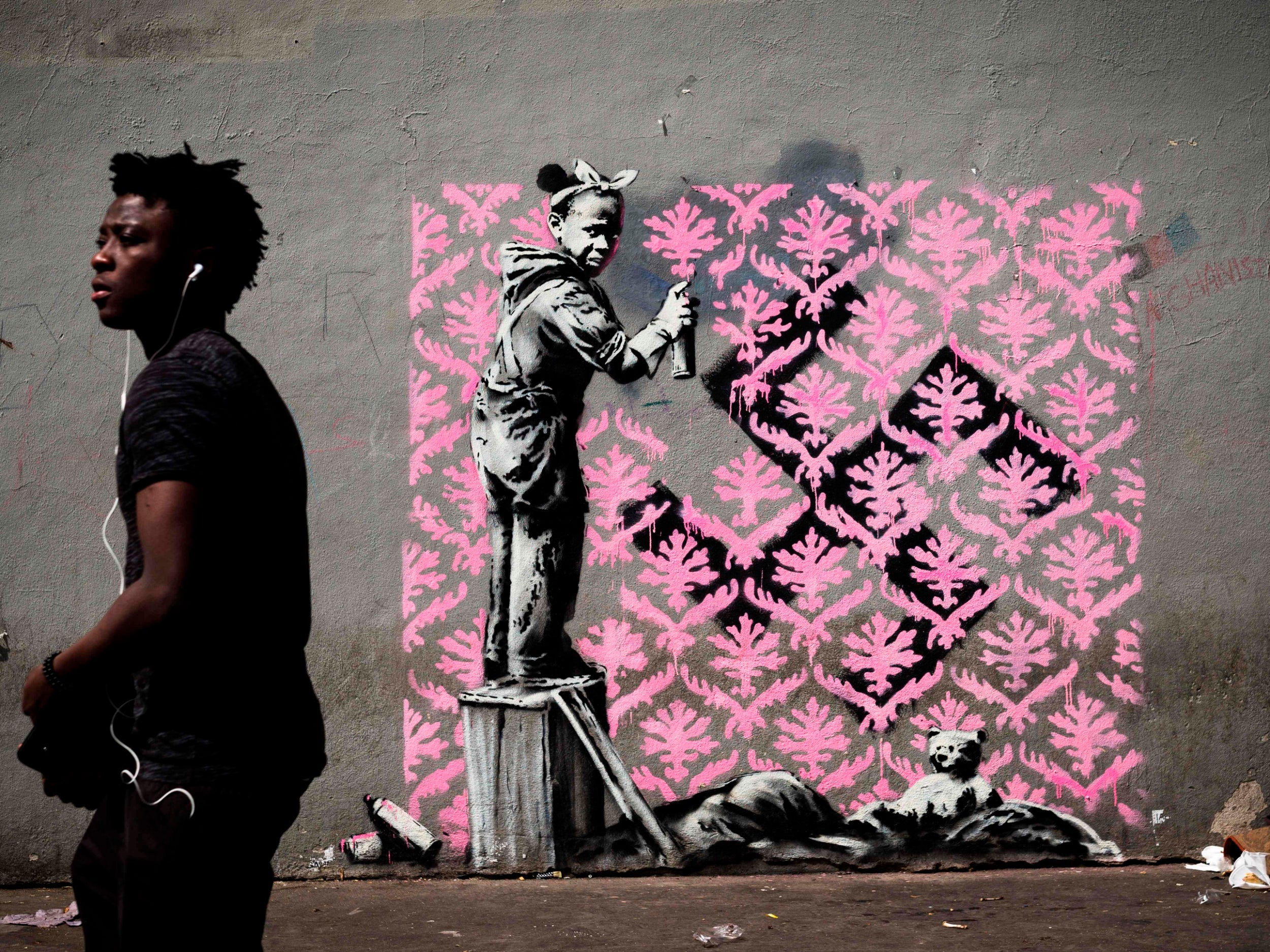The Independent's journalism is supported by our readers. When you purchase through links on our site, we may earn commission.
Who is Banksy? The suspects linked to the art world’s biggest mystery
Massive Attack's Robert Del Naja prime suspect but not the only man in the frame
One of Banksy’s latest stunt has again excited interest in unmasking the art world’s most mysterious figure.
When a Sotheby’s auctioneer closed the bidding on a stencil of a girl holding a heart-shaped balloon with a bang of his gavel in October 2018, the canvas began to slip from its gilded frame and tumbled to the floor, shredded into strips.
The self-destructing work prompted gasps of astonishment throughout the room and quickly went viral on social media.
So who is the man beneath the hood? Is it a man at all? Is his output even the work of one person?
Here’s an overview of the candidates.
Robert Del Naja
The prime suspect has long been Robert Del Naja, also known as 3D, a founding member of trip hop band Massive Attack.
Banksy’s street art first appeared in Bristol, where Del Naja hails from, his career beginning as a freehand graffiti artist with the DryBreadZ Crew before he joined The Wild Bunch in the early 1990s.
Del Naja has sometimes designed album sleeves for Massive Attack, including the cover of Heligoland (2010), featuring stencil art akin to Banksy’s signature style.
Both Banksy and Del Naja have addressed the similarities and claimed to be friends and thus two separate people.
The musician appeared in Banksy’s 2010 mockumentary Exit Through the Gift Shop and claims to have spotted the artist at his gigs.
In turn, Banksy is named as the author of the forward to Del Naja’s book 3D and the Art of Massive Attack (2015), a gesture that could be intended to throw fans off the scent.
Leapt on by some as definitive proof was a slip of the tongue by DJ Goldie, who referred to the artist as “Robert” on an appearance on Scroobius Pip’s podcast Distraction Pieces in June 2017.
“No disrespect to Robert, I think he is a brilliant artist. I think he has flipped the world of art over,” Goldie said, sparking a frenzy of excitement that could equally have been a planted remark.
Robin Gunningham
Another likely candidate is Bristol artist and former public school boy Robin Gunningham.
Criminologists at Queen Mary University of London used a process known as “geographic profiling” to tag Banksy in 2016, matching the locations of 140 works with several addresses known to have a close association with Mr Gunningham.

“I’d be surprised if it’s not him, even without our analysis, but it’s interesting that the analysis offers additional support for it,” said Steve Le Comber, co-author of the report on the project, when interviewed by the BBC at the time.
“It rapidly became apparent that there is only one serious suspect, and everyone knows who it is. If you Google Banksy and Gunningham, you get something like 43,500 hits.”
The Gunningham theory was briefly reignited when a car park attendant at Banksy’s “Dismaland” theme park in Weston-Super-Mare was mistaken for him in 2015.
He was, however, merely a lookalike working for the council.
Thierry Guetta
The hapless French graffiti artist seen in Exit Through the Gift Shop, attempting to win fame as “Mr Brainwash”, has also been suggested.
The theory posits that Mr Guetta was only feigning mediocrity in the film and is actually the artist himself hiding in plain sight.
Unlikely, but undeniably precisely the sort of stunt that would appeal to Banksy’s sense of humour.
Other suspects and theories
There have been various other “outings” over the last 15 years.
An Anti-Graffiti Task Force in Liverpool accused local street artist Paul Horner in October 2014 and New York spraypainter Richard Pfeiffer was spotted in front of a mural actually executed by Banksy in March 2015 and accused of being the masked man by the cops.

Both of those cases were abandoned by the authorities and the only other evidence to go on are vague sightings reported in Brooklyn and Melbourne, Australia.
These could merely have been imitators and, in truth, the evidence is little better than your average photo of Big Foot or the Loch Ness Monster.
Journalist Craig Williams has meanwhile suggested that Banksy is really a collective of artists associated with Massive Attack rather than one person, cross-referencing the sudden appearance of Banksy murals with the band’s tour dates in a viral blog post of August 2016, finding a number of matches.
Join our commenting forum
Join thought-provoking conversations, follow other Independent readers and see their replies
Comments
Bookmark popover
Removed from bookmarks